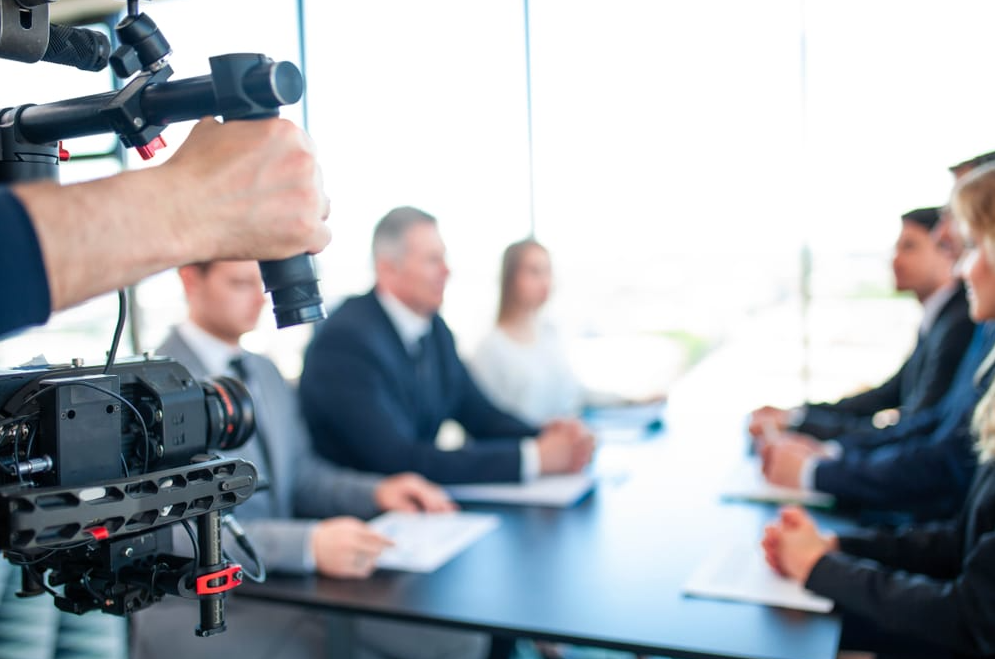The Function of Legal Videography in Modern Legal Process
Checking Out the Vitality of Legal Videography: a Comprehensive Understanding Into Its Capability in Protecting Accurate Visual Records for Legal Situations
Lawful videography stands as an essential element in the realm of legal procedures, serving as a quiet yet powerful onlooker in the search of justice. As we dig right into the capability and relevance of lawful videography in the context of legal instances, a profound awareness dawns upon the essential role it plays in forming the training course of justice.
Importance of Lawful Videography
Highlighting the pivotal function of lawful videography in modern legal process, its significance depends on its capacity to provide undeniable aesthetic evidence that improves the discussion of testaments and facts. By catching real-time occasions, depositions, and witness testimonies in a video style, lawful videography guarantees that every expression, information, and nuance is accurately maintained for later review. This aesthetic documents works as a powerful tool in courts, enabling jurors and courts to much better recognize the context of an instance and make educated choices based upon the here and now evidence.
Furthermore, legal videography adds to boosted transparency and accountability in the lawful system. It assists stop misconception or adjustment of information by providing a unbiased and clear document of occasions. This visual evidence can additionally be important in solving disagreements, validating declarations, and eventually strengthening the trustworthiness of legal procedures. Fundamentally, the significance of legal videography hinges on its capability to maintain the stability of the legal procedure by recording and maintaining exact visual records that support the pursuit of justice.
Capability in Lawful Documentation
Lawful videography's function in contemporary legal process prolongs past offering aesthetic evidence; its capability in legal documentation is crucial for precisely preserving the information of events and testaments. Through the thorough recording of depositions, courtroom process, witness testimonies, and criminal activity scene investigations, lawful videography guarantees an unfiltered account of occasions that can be revisited and examined throughout the legal procedure. This accurate documents serves as an essential resource for courts, courts, and lawyers to reference specific moments, body movement, face expressions, and nuances that may not be totally captured in composed records alone.
In addition, legal videography plays a crucial role in preserving the integrity of legal process by decreasing the danger of misinterpretation or adjustment of info. The aesthetic documents captured through legal videography supply an impartial representation of the realities presented during a situation, supplying a comprehensive and trustworthy source of proof that can significantly impact the outcome of legal conflicts (Legal Videography). In significance, the capability of legal videography in legal documentation acts as a foundation in maintaining transparency, accuracy, and fairness within the lawful system
Importance in Visual Proof Conservation
Maintaining aesthetic proof with careful recording methods is an essential facet of lawful videography. The value of aesthetic evidence preservation can not be overemphasized in lawful process. Aesthetic evidence, such as videos of have a peek at this site crime mishaps, scenes, or testaments, can provide invaluable understanding into events that words alone might not completely capture. By accurately recording these visuals, legal videographers play an essential duty in making certain the stability and authenticity of proof provided in court.
Visual proof preservation additionally assists in stopping misunderstandings or misinterpretations that can emerge from composed or verbal testimonies. The capacity to see and hear occasions as they took place can dramatically influence the outcome of an instance. In addition, visual proof can work as an effective tool for both the prosecution and defense in offering their disagreements persuasively.
Duty in Ensuring Justice
In the pursuit of reasonable and simply lawful outcomes, the role of lawful videography is important. Lawful videography plays an essential duty in guaranteeing justice by giving unbiased and precise aesthetic evidence that can dramatically impact the outcome of legal cases. Unlike written records or testimonies, video recordings published here record the subtleties of body movement, facial expressions, and tone of voice, using an extensive representation of events as they unfold. This visual evidence is especially valuable in courtrooms, where it can help challenge or prove witness statements, enhance disagreements, and eventually add to the establishment of fact and justness.
In addition, lawful videography works as a method of maintaining turning points and information that may be missed out on or misunderstood in written records (Legal Videography). By recording scenes, actions, and communications in real-time, legal videography aids protect against misrepresentations and guarantees that all events included have access to the very same info, promoting openness and responsibility in the lawful process. Ultimately, using legal videography not just enhances the performance of legal process however also upholds the concepts of justice and equity in the legal system
Essential Device for Legal Instances

Conclusion
In verdict, lawful videography plays a crucial role in protecting precise visual records for legal situations. Its value exists in its functionality in legal documents, value in visual proof conservation, and function in guaranteeing justice. As a vital device for lawful situations, lawful videography functions as an important source for providing visual proof and adding to the overall honesty of the legal process.
Lawful videography's role in modern-day legal process prolongs beyond giving aesthetic evidence; its capability in legal documentation is essential for properly preserving the information of testimonies and occasions. In essence, the performance of legal videography in legal paperwork serves as a keystone in upholding transparency, accuracy, and justness within the legal system.
Inevitably, the use of lawful videography not only improves the performance of legal process but likewise upholds the principles of justice and equity in the lawful system.
As a Visit Your URL vital device for legal instances, legal videography offers as a useful resource for offering visual proof and contributing to the overall honesty of the legal procedure.